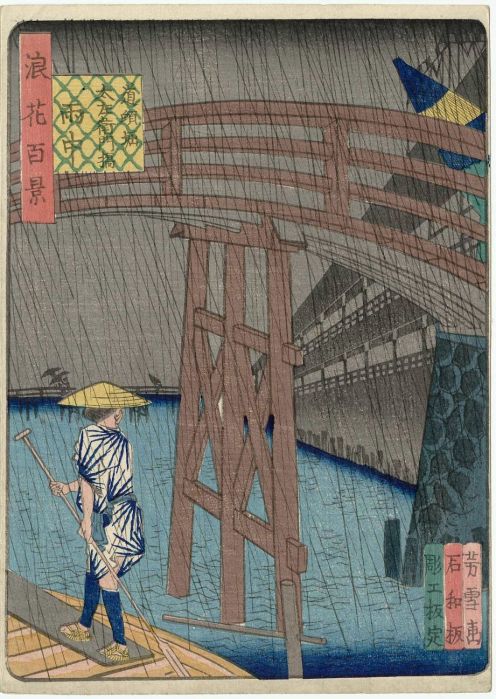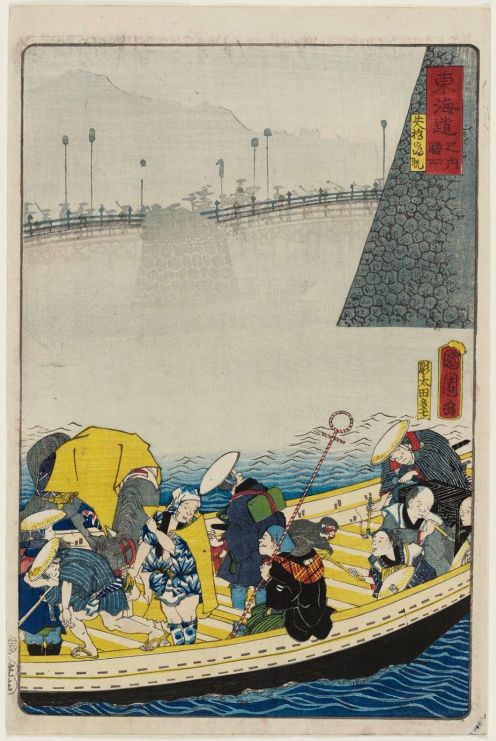The next couple of posts are going to be focused on the work of two of the most famous ukiyo-e artists Hokusai & Hiroshige. Before we get started I thought that I should answer some questions that I’ve been asked about woodblock prints.
Adrian. 28.Mar.2016

Nansuitei YOSHIYUKI: Dôton-bori Canal and Tazaemon-bashi Bridge in the Rain. From ‘One Hundred Views of Osaka’. 1860
Are Japanese Prints Art?
Japanese prints may hang in most Art Galleries around the world, but at the time they were produced they certainly weren’t considered art. The traditional Ukiyo prints, and later Shin- Hanga prints were commercial products: images commissioned by a publisher of (for example) a kabuki actor to be sold at the theatre, with the intention to be a popular as possible. They would continue to be printed until they stopped selling, at which times the blocks would be planed down and then craved with a new (hopefully even more popular) image.
Sosaku Hanga prints were created in an environment much closer to what we would consider ‘normal’ for art: an artist would come up with an idea, design, carve, and then print a limited number, all themselves.

Utagawa KUNIKAZU: Actors Nakamura Jakuemon I as Neko Ikkaku and Onoe Tamizô II as Inumura Kakutarô (R), and Arashi Rikaku II as Inukai Genpachi (L). 1857
The famous names associated with Japanese Prints didn’t actually make prints!
There are no prints actually made by Hokusai, Hiroshige, or any of the other names associated with the form. Print making was a commercial industry made up of many people:
A Publisher: They would come up with the concept, and then commission a designer to come up with the with the art on which the prints will be based.
A Designer: These were the people who sketched the images that became the basis of the print , and it is their names go on the print.
A Carver: A team of people who carve the blocks will be used to produce the print.
A Printer: A team of people that will actually print the print.
An excellent article looking in more depth at the people involved in making prints and also some original print sketches can be found on David Bull’s wonderful blog woodblock.com

Toyohara KUNICHIKA: Zeze Castle: Returning Sails at Yabase. Scenes of Famous Places along the Tôkaidô Road. 1863
The names of the people on the prints, weren’t even their actual names?
As we have already said, the people’s names who are on the prints, aren’t those who made the prints. But in addition to that the artist’s names aren’t their actual names.
It is easier to think of the names as brands. As already discussed the prints were commercial enterprises, and while prints would often be branded by the publishing house that commissioned them they would also carry the artists name. If an artist’s work had been popular, when that person wants to retire rather than having to establish a new ‘name’ the publishers would often get someone else working under that name, often without any acknowledgement of the change. (For a modern day equivalent think about bands like Queen, continuing to tour with different lead singers).
The names would sometimes be given by the publisher, sometimes it would in part from the name under which the designer had apprenticed. For the famous designer Utagawa Hiroshige, the Utagawa comes from the school under which he trained.